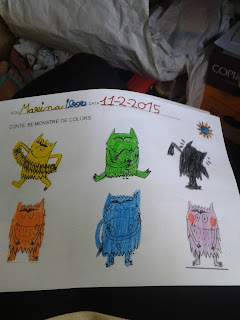I think that all teachers
must take part in courses related to my area of knowledge. In my case, I am a
kindergarten teacher, at this level is necessary to innovate and use active
learning methodology for children. For this , as teachers, we must be in
continuous training.
Therefore, I would also
like to take part in courses related to new technologies, for example about
electronic interactive whiteboards, create a blog or interactive activities.
I think it is fundamental
to know how to exploit the great opportunity that the Internet offers. If the
teachers know how to use them, they will be very useful tools to arouse their
interest of the students.
This type of technology involves
a lot of advantages in my classroom and learning of my students, such as:
-
You can enhance any presentation or lesson by easily
integrating video, animation, graphics, text and audio with the spoken
presentation.
-
The interactive whiteboard allows a large group to sit
and participate comfortably in a presentation as opposed to a group crowding
around a smaller computer screen.
-
You can display material from a number source such as
CD-ROMs, websites, DVDs, VHS tapes and television.
-
Notes, diagrams and entire lessons or presentations
can be saved, archived and added to the internet or disk. This means that
presentation or class work in progress can be saved ready for the next period
or school day.
-
Creates an environment of collaboration and
interaction, allowing the students to be more engaged and therefore more likely
to learn and remember the information.
-
Teachers can do and create different activities adapted
to our pupils' necessities or work specific content depending on the project
topic. We could do materials to develop cultural awareness.
Also, as teachers we must learn another language, especially English. This language will give us a lot of
opportunities in the future.
In my opinion, the best way to
share good practice amongst teaching professionals is, nowadays, Internet.
Teachers can use it to share lesson plans, ideas to encourage students, and other
innovations.
Today,
they are online webs in which people with similar interests or common goals get
together to share their resources, develop working strategies, solve problems and
improve individually as well as organizational performance.
We also
can take part communities of practice, where people share their repertoire of
resources, experiences, stories, tools, ways of addressing recurring problems.
It can be small or large, other local and some cover the globe, some meet
face-to-face, some mostly online, some recognized and other informal and
invisible. For example, Harvard style, Erasmus + for teachers, among other.








